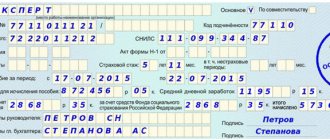Marketing market research is driven by the emergence of various modernized, new products. Advertising agencies, departments and other specialized units study economic relations. This is to ensure that suppliers can provide a competitive price for goods and services. The market situation is an applied economic branch, methodologically based on the theory of reproduction.
Market characteristics and its components
In translation, this is a system for studying an established situation over a period of time. This concept is present in the language of entrepreneurs and economists, but it is used in other areas. The opportunistic market represents social production. More precisely, it is a direct process that is within a certain time frame, social, geographical and others, as well as under the influence of cumulative formative factors.
Market analysis
This concept includes various types of aggregate factors of reproduction, expressed in the dynamics of supply and demand, as well as prices. It is necessary to conduct such research in several aspects: short, medium and long term. This is directly related to the fact that the behavior of market relations is very unpredictable and depends on time, so any changes can occur instantly or after a couple of days, weeks, and so on.
Market analysis takes into account indicators in general and the specifics of the situation, namely:
- dynamics,
- variability,
- inertia,
- uniqueness,
- repetition,
- contradictions,
- unevenness.
These factors are very multidirectional, and each of them affects the market situation oppositely and simultaneously. If one of these factors increases stability and the like, then the other, on the contrary, reduces it. In view of this, the studies provide a multi-level hierarchy of indicators and values. In particular, the ones that stand out the most are those that impact the objectives of the research being conducted.
What is market analysis?
Prices for estimate services by option:
- Option: for 1 position in the task 49-230
rubles. - Option: 0.2-2%
of the cost based on the estimate.
Detailed explanations of the price of services are presented below.
We set a price for our services depending on the complexity of developing estimate documentation. The complexity is influenced by the quality, scope of the client’s task (input data) and the type of estimate document being compiled.
The worse the quality of the task, the more difficult it is for the estimator. The greater the number of construction resources, works and conditions of their use, the longer the work of the estimator takes. The more requirements the task places on the type of estimate document, the more difficult it is to draw it up.
Good initial data are detailed types of work. They indicate the names of the manufacturer and brand of construction resources used, and indicate volumes that, if necessary, can be converted into any other formats. The cost of services in this case is minimal.
Poor input data are those that can be understood in different ways, i.e. they are not specific and not detailed in terms of the types of work used, types of materials, volumes and technology of work. In this case, the cost of services is increased, since the task will have to be finalized together. Sometimes the labor intensity of rework is higher than making an estimate.
More details about the types of source data can be found in the article: Assignment for estimate documentation.
Requirements for the type of estimate documentation may additionally include the development of:
- documents - market analysis, resource statement,
- use of non-standard calculation methods,
- non-standard forms of documents, etc.
The price of our estimator’s services also depends on the number of items (type of work, material, etc.) in the source data. On average, the price of such a position ranges from 49 to 230 rubles. This difference in cost per 1 item is obtained, as indicated above, depending on the volume of such items, the quality of the source data and documentation requirements.
Sometimes the preliminary initial data is so uncertain that it is impossible to even approximately determine the number of lines, so the option of estimating the price of services as a percentage of the cost obtained in the estimate is used. On average, this is from 0.2% to 2% of the cost obtained in the estimates.
Of course, we offer significant discounts for large volumes of work. We have repeated experience in providing services at 49 rubles per position with a large number of them.
Please note:
The minimum order for any estimate document with us starts from 3990 rubles. A complete price list for all our services can be found on the Prices for Estimated Services page.
Market overview
This forecast is compiled specifically for the markets for the near future. The main goals of the review: reliability and correctness, which are achieved through analysis - competent and complete. In fact, the environment or situation that exists in the market is called opportunistic. As a rule, many people want to improve it, and for this purpose a standard forecast has been created, which includes several parts:
- an introduction consisting of characteristic features learned over a period of time;
- the production part with the analysis and dynamics of demand, supply and corresponding sales of goods, services, scientific and technical devices, and so on;
- consumption and demand for a product, which indicates the reasons for changes and distribution accordingly;
- trade between cities, countries - global implementation. This part of the review focuses on the possibilities for developing or improving the enterprise as an exporter;
- the price component is a market factor, which is the main one in the entire forecast. This part indicates the general dynamics of wholesale, exports, as well as the relationship between supply and demand. The main indicators of other enterprises are highlighted, a forecast for the near future is created taking into account the development or improvement of equipment, goods or services.
The market state at a certain point in time is the market situation in the current period. Moreover, it can be improved, changed, improved.
Methodology of market analysis
The current prices from MDS 35 have been replaced by the new concept of MARKET ANALYSIS from Order 421. What is it and what does it come with? We study all the nuances, how it was before and what is now.
Market analysis - a new approach to accounting for materials and equipment at supplier prices
Market analysis is used in the absence of data on estimated prices for product materials, structures and equipment in basic prices (as part of the estimated standards included in the Federal Reserve System), as well as current prices in the FSIS CS system and in the absence of estimated standards for certain types of work and services.
What did we think before? We took price lists from different suppliers, compared them, selected the material and equipment we needed according to the specified characteristics, and used its price in the calculation.
How are we going to count now? Now we must collect information on current prices posted in the FSIS system and select the most economical option. That is, we must attach all price prices to justify our choice and draw up this justification in accordance with the recommended form.
An important point: we cannot work with a supplier who is not in FSIS.
Let's look at all this in more detail.
COMPLETING THE CONJUNCTURE ANALYSIS
Methodology 421 clearly defined the procedure and rules for indicating the code and price for materials and equipment not included in the price tag.
To conduct market analysis, information from open and (or) official sources on current prices is used. The results of the market analysis are drawn up in accordance with the recommended form given in Appendix No. 1 to the Methodology and signed by the developer or technical customer.
SAMPLE CONJUNCTURE ANALYSIS FORM
RATIONALE FOR CONJUNCTURE ANALYSIS
Documents justifying the cost at current prices must be received within a period not exceeding 6 months before the estimated cost is determined. If it is impossible to conduct a market analysis based on the data from documents justifying the cost received no earlier than 6 months before determining the estimated cost, it is allowed, by agreement with the customer, to determine the estimated price of such material resources using supporting documents from earlier periods.
For market analysis of materials and equipment , it is permissible to use:
price lists;
price lists;
commercial offers;
technical and commercial proposals;
settlement prices.
Material resources and equipment are assigned a code/code consisting of the letter designation “TC” and five groups of numbers:
the first group of numbers is the Construction Resources Classifier group code;
the second is the code of the subject of the Russian Federation where the manufacturer (supplier) is located;
third - TIN of the manufacturer (supplier);
fourth – date of setting the price, in the format DD.MM.YYYY;
fifth - data on the transportation of construction resources (01 - taking into account transportation costs, 02 - excluding transportation costs).
For example, shopping center_64.4.03.02_77_7719775602_18.02.2020_02
For market analysis, it is allowed to use the nearest manufacturer or supplier and take into account delivery, according to the Federal Reserve Service.
Pricing documents from the manufacturer or supplier must contain:
-Name of manufacturer or supplier;
-TIN of the manufacturer or supplier;
-Contacts of the manufacturer or supplier;
-full name of the contact person (performer);
-date of document preparation;
- validity periods of offers;
- units of measurement of a product or service, currency of calculation, conversion rate.
In technical and commercial proposals, indicate whether VAT, transportation, installation supervision, commissioning supervision, etc. are taken into account. and are there signatures and seals?
Estimated prices
Estimated prices for domestic manufacturers contain the following cost items:
costs of purchasing materials;
transportation costs (including loading and unloading) and procurement and storage costs;
wages (including insurance premiums) and operating time of equipment (machines and mechanisms);
energy payment;
general production and general business expenses and depreciation;
profit.
Calculation materials
Calculation materials for domestic manufacturers are generated to justify calculation prices, which include:
direct costs of producing a unit of product, including profit;
data on material consumption;
breakdown of overhead costs and depreciation;
accounting documents that confirm the cost of materials.
Estimated prices from imported manufacturers are issued in free form.
Summing up
We wanted the best - it turned out as always. We were offered an algorithm for using market analysis, but there was clearly not enough data to apply it.
Now we will have to manually encrypt and encode materials and equipment.
The question remains: whether to take into account transportation costs or not.
We have become less free in choosing materials and if we want to choose certain characteristics, we are now limited to choosing those items that are in the FSIS.
When calculating estimates at two price levels (current and basic), prices for materials and equipment are determined as follows: and
Current price - according to FSIS CA data or market analysis;
Base price – current price divided by the index.
We recommend reading - Requirements for the electronic format of estimates for 421 pr
Features of market research
The economic situation is a market situation that includes certain indicators:
- production potential;
- market capacity and structure;
- organization;
- terms of implementation;
- supply and demand.
The situation is studied at different levels. In fact, it has several spheres: global, industry, and individual goods. If you study the general economic part, then they take into account various international factors, the ability of the production part to be implemented at the proper level, without loss of profit, and the like. In the case of the industry sector, knowledge of global practice is required.
But these market research are based on information, as well as analysis and processing of data in a certain market in a specified period of time. Individual products are generally not considered by large economic enterprises. There are times when studying one product or service can bring enormous profits to the entire economy. In this case, it is studied in the same way as other areas.
According to the price sheet method
⇐ PreviousPage 106 of 111Next ⇒The pricing (market) sheet consists of comparative tables on the costs associated with the delivery of the goods being sold (or purchased) for each transportation option.
Let us show the essence of this technique using a simplified example of drawing up a competitive sheet for the sale of 1 ton of pig iron from the Magnitogorsk plant for export to Dusseldorf (Germany).
The “world” price for cast iron on the European market is the price of the European Coal and Steel Community (metallurgists of the Ruhr, Benelux and Lorraine), the internal transport component of which can be neglected. At the same time, when calculating prices, one should take into account the transport component of the competitor of the Magnitogorsk exporter in the Dusseldorf market - the exporter of cast iron from Kiruna (Sweden) to Germany (say $20 per 1 ton).
The competitive sheet contains transport costs for each of five transportation options:
1. In direct railway communication under the conditions of FOR Magnitogorsk - FOR Düsseldorf with the calculation of a direct tariff in the form of the sum of sectional tariffs of roads in the Russian Federation and Germany and transit (at MTT tariff rates) through the territory of Belarus and Poland, including the costs of transshipment of cargo at the border crossing Art. Brest (Belarus) / st. Malaszewicze (Poland).
2. In mixed rail-water communications.
2.1. Magnitogorsk - Kaliningrad - Dusseldorf with the calculation of the through tariff in the form of the sum of the railway tariff of the Russian Federation from the station. Magnitogorsk - to the railway border station on the border with Belarus, railway tariffs for the Belarusian and Lithuanian transit sections, the tariff of the Kaliningrad railway plus the cost of transshipment in the Kaliningrad port, plus sea freight "free in" Kaliningrad - "free out" Rotterdam, plus the cost transshipment in the port of Rotterdam, plus the river Rhine tariff Rotterdam - Düsseldorf.
2.2. Magnitogorsk - St. Petersburg - Dusseldorf with the calculation of freight charges according to the railway tariff of the Russian Federation (Price List 10-01), other costs by analogy with option 2.1.
2.3. Magnitogorsk - Mustola (Finland) - Dusseldorf (Germany): in direct Russian-Finnish railway communication FOR Magnitogorsk - FOR Mustola (the sum of railway tariffs of Russia and Finland) plus the cost of transshipment in the port of Mustola, plus freight for delivery of 1 ton of cast iron by boat from the port of Mustola to the port of Dusseldorf.
2.4. Magnitogorsk - Ulyanovsk on the Volga - Dusseldorf: railway tariff of the Russian Federation Magnitogorsk - Ulyanovsk, plus transshipment in the port of Ulyanovsk, plus freight for the delivery of 1 ton of cast iron on a ship from the port of Ulyanovsk to the port of Dusseldorf.
Let, for example, the most optimal option be the last option 2.4. (let's say $100 for 1 ton of cast iron). In this case, the seller of cast iron needs to determine its competitiveness in relation to Swedish cast iron, taking into account the difference in the size of the components ($100 and $20) per 1 ton of Swedish and Russian cast iron.
⇐ Previous100101102103104105106107108109110111Next ⇒
Site search:








